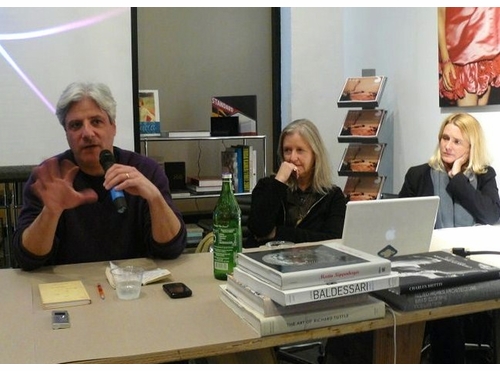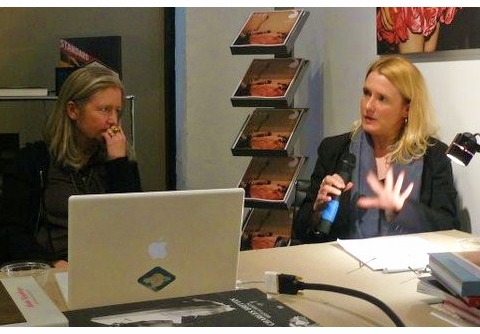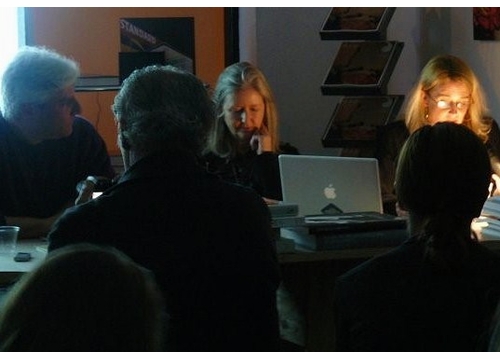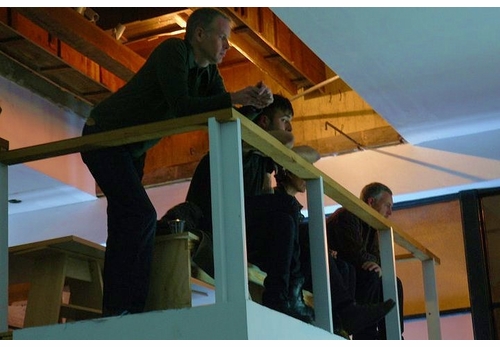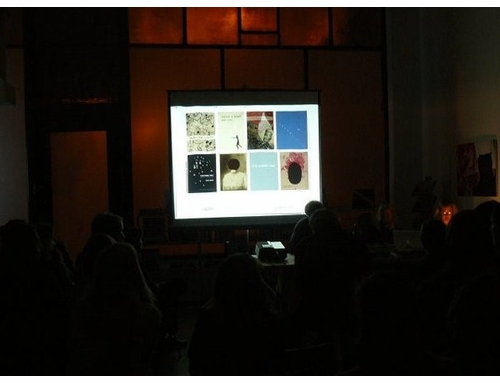| RECENT POSTS DATE 2/1/2026 DATE 1/22/2026 DATE 1/21/2026 DATE 1/19/2026 DATE 1/19/2026 DATE 1/18/2026 DATE 1/17/2026 DATE 1/14/2026 DATE 1/13/2026 DATE 1/12/2026 DATE 1/11/2026 DATE 1/5/2026 DATE 1/1/2026
| | | JANE BROWN | DATE 3/14/2011On Wednesday, March 2, in collaboration with Leonardo Bravo’s Big City Forum, ARTBOOK @ Paper Chase held a panel on creating visual books in the digital age. Moderated by Los Angeles Times book critic David Ulin, the panel included influential book designer Lorraine Wild and Siglio Press publisher Lisa Pearson.
Ulin began the evening’s discussion with some words about the concept of empathy. He explained that we engage with the printed form so that we can “have a moment of connection in a universe of disconnection”--and that this can happen through digital or analog means. According to Ulin, the challenge is figuring out how to clear the electronic noise in a culture that is more and more fundamentally distracted. How can we cut through the clutter to interact and engage with a work of art or fiction? How can we immerse ourselves in the artist’s vision?
David Ulin, Lorraine Wild and Lisa Pearson.
Ulin discussed our tendency as a culture to latch on to the next new thing, acknowledging the undeniable seductivity of e-readers, in particular the i-Pad. He pointed out, however, that with digital devices, the e-reader itself becomes the object of beauty, of intrigue, while the book becomes something smaller—the content of an app, the fuel that confirms and allows the function of the device—whereas when one encounters a beautiful book, the book itself is and remains the object of beauty.
Ulin concluded by comparing our current "transitional" period to the early days of radio and television, when fans predicted the death of newspapers and cinema, respectively. As we all know, these earlier transitions proved much more complicated and nuanced than predicted. Today, according to Ulin, print design and technology is actually evolving in tandem with the more press-friendly digital advances. Cheaper, better, faster computers, design programs and print technologies are allowing for more experimental print production, generating all sorts of books in every imaginable shape and size. Ulin called ours a “Guttenbergian” moment, and called upon us to decide what that means, and how we want to use it.
According to Wild, left, there are many guide books that will tell you what a paragraph should look like. For Wild, the more important question is, "a paragraph about what?"
Although Wild occasionally feels like "the guy building horse carts down the street from Henry Ford’s factory," she told Ulin she feels "lucky to be designing books at a time when the book is supposed to be dead.” She said she found the friction between her early hands-on design and the new digital advances interesting, and praised the technological advances that have enhanced book design over history, rejoining Ulin's remarks about television's early promise to kill off movies: “When the book was introduced it was seen as killing memory.”
Wild went on to praise books for adding to the "cultural archive of the world we live in." She spoke movingly of "the stillness of the book, the slowness of the book, and the ability of the book to crystallize, to pin down a moment. The reason why people keep looking at the book is the stillness, it’s a mechanism that captures a moment in time." With digital advances, the internet, e-readers and everything else that's competing for our attention nowadays, she challenged the idea that books are a place where "ideas go to die. Now we have this other medium that is in a constant state of flux and growth, so the issue of the value of what's chosen and captured is more critical." When working with an artist or an author, she is keenly aware that her work will allow theirs to live on in the world. She acknowledged the wonderful contradiction of using the book to both freeze time for its content--create a time capsule--and "shove it into the future."
For Lisa Pearson, right, "intimate engagement is what I’m after."
Lisa Pearson's Siglio Press has been described as a Micro-publisher. Pearson describes it as a "non-political press committed to various kinds of subversions," and asks each book to function as a "miniature museum," an experience which she says is impossible to create in digital format. Her books are small, and thus meant to be held close and looked at as they are read. According to Pearson, they are "non-transparent containers in which all elements contribute to the experience of reading." And "to truly savor a book, one must have an intimate experience with it, which is tactile and engaging in a way that does not translate to digital." Her goal is to produce works that will be re-read. This primacy cannot be found in digital formats.
In response to Ulin's question, "How does a book cut through the noise," Pearson responded, "It's not just noise, but playing with the categorical expectations of a book. We cut through the noise when we make the space to think about something differently from how we have been told we are supposed to think about it. In response to a question about using sequencing for emphasis, she said she used sequencing not for emphasis, but for "shaping experience."
Standing room only: More than 60 people showed up to hear Ulin, Wild and Pearson speak on the future of the printed book. The spillover crowd took over the perimeter of the lecture space and the balcony, above.
For more on the event, please visit ForYourArt.
| |
|
